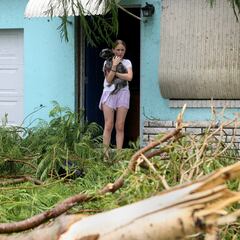What is the difference between El Niño and La Niña climate phenomena?
The differences between the two common weather systems create the conditions that cause the disastrous hurricanes that have been seen in 2024.


El Niño and La Niña are two opposing climate patterns that form part of the El Niño-Southern Oscillation (ENSO) cycle, significantly impacting global weather patterns, ecosystems, and economies. These phenomena occur every two to seven years on average, typically lasting 9 to 12 months, but can sometimes persist for years.
At present, the US is in the midst of La Nina which increases the severity of hurricanes like Milton.
Both El Niño and La Niña can have far-reaching effects on global weather patterns, influencing temperatures, rainfall, and extreme weather events worldwide. These phenomena can impact food production, human health, and water supply across different regions.
For instance, El Niño typically leads to increased global temperatures, while La Niña has a cooling effect.
What weather is seen in an El Niño?
El Niño, Spanish for “The Little Boy,” is characterised by warmer-than-average sea surface temperatures in the central and eastern tropical Pacific Ocean. During an El Niño event, the Pacific jet stream shifts southward, leading to warmer and drier conditions in the northern US and Canada a swell as wetter conditions and increased flooding in the Gulf Coast and Southeast.
El Niño can have significant impacts on marine life, reducing phytoplankton populations and affecting the entire food chain.
What weather is seen in La Niña
Related stories
La Niña, meaning “The Little Girl,” is the opposite of El Niño, featuring cooler-than-average sea surface temperatures in the same region. During a La Niña event, the jet stream is pushed northward, resulting in drought conditions in the southern US. Conversely, heavy rains and flooding occur in the Pacific Northwest and Canada
La Niña can lead to a more severe hurricane season and supports increased marine life along the Pacific coast.


Complete your personal details to comment